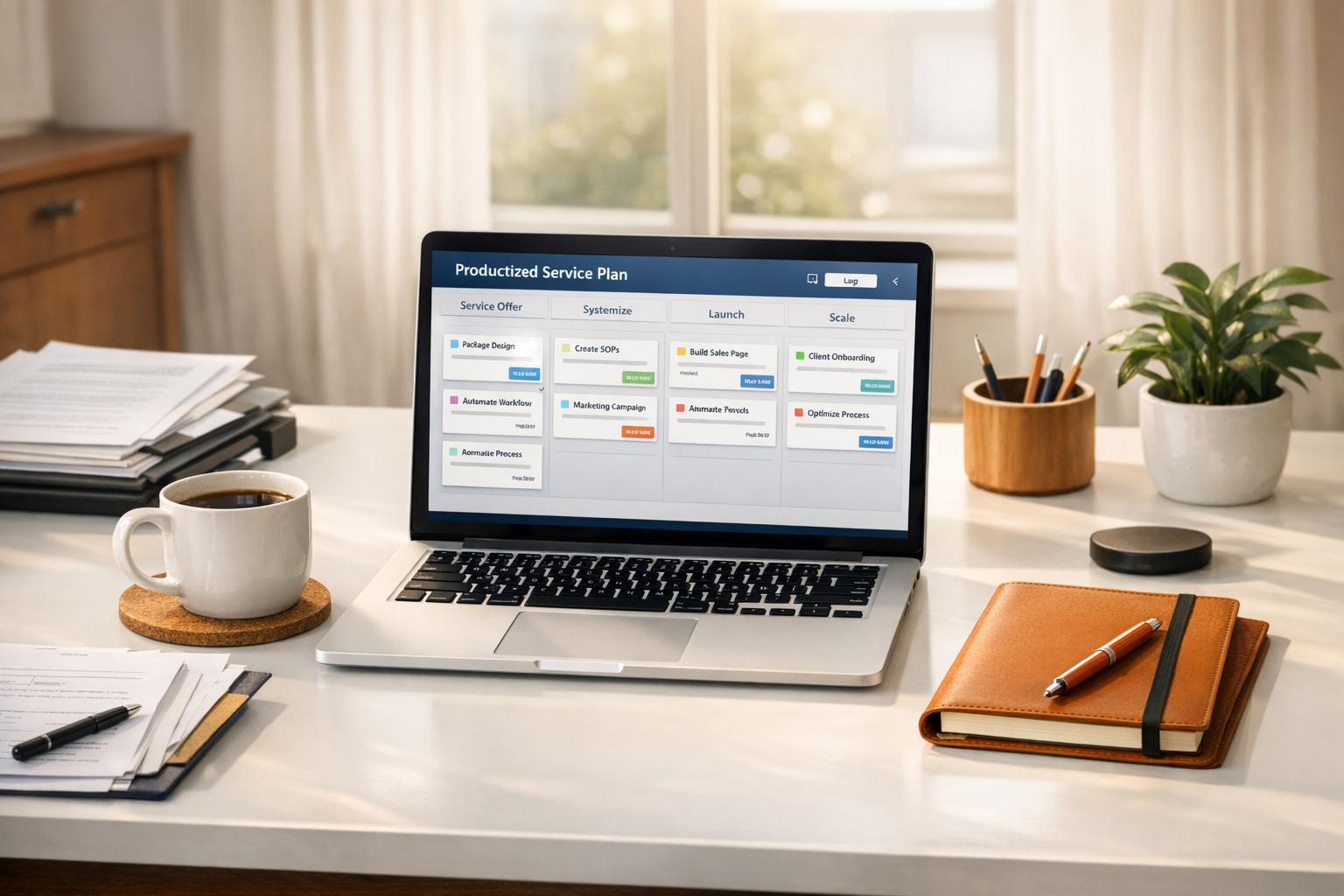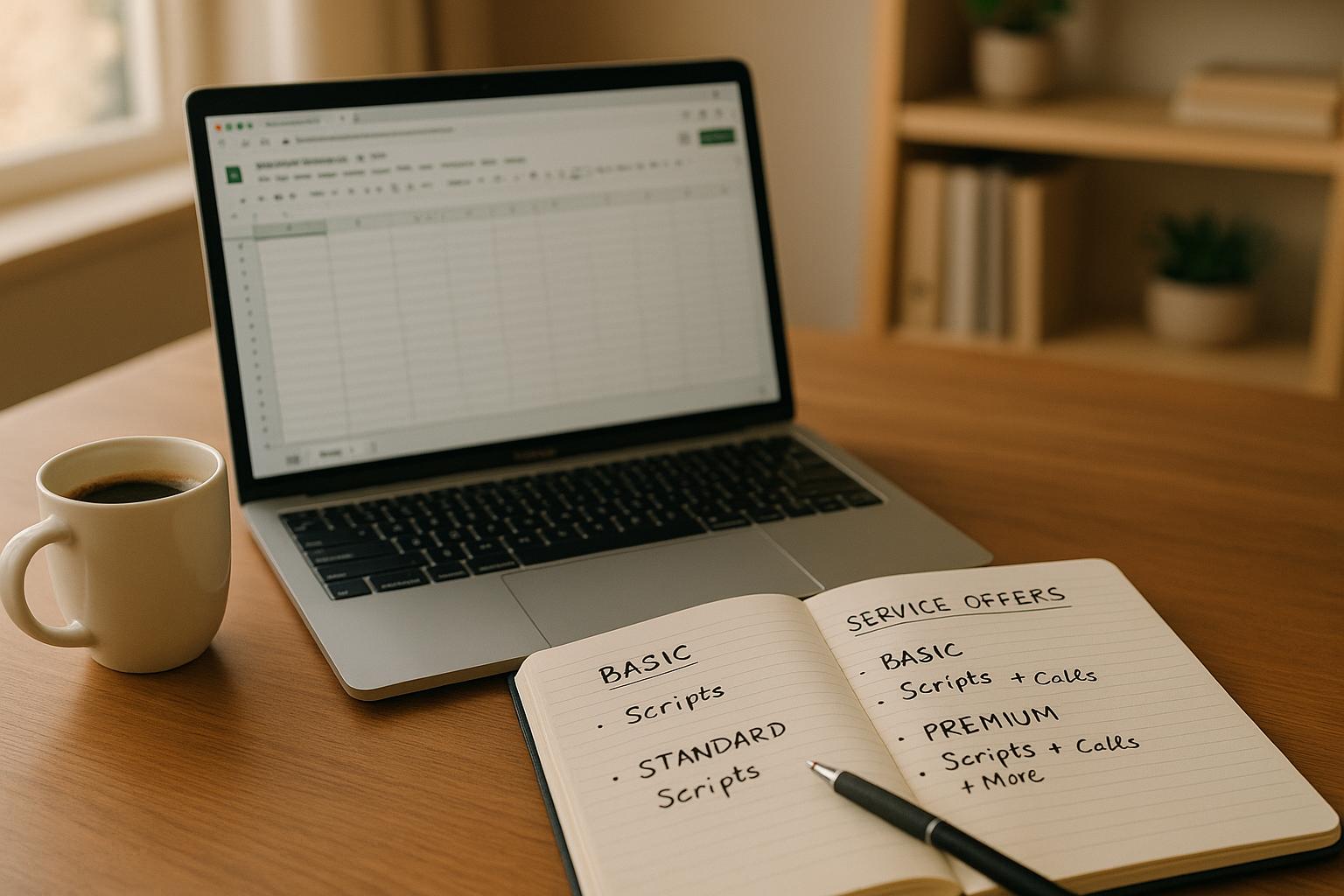
In 2025, deciding whether to start a business from scratch or buy an existing one depends on your goals, finances, and risk tolerance. Starting fresh gives you full control and lower initial costs but requires time to build revenue and navigate uncertainties. Buying an existing business offers instant cash flow, established systems, and customer relationships but comes with higher upfront costs and potential hidden risks.
Key factors to consider:
- Starting a Business: Lower upfront costs, complete control, but slower time to profitability and higher uncertainty.
- Buying a Business: Immediate revenue, proven operations, but higher costs and risks like hidden liabilities.
AI tools like IdeaFloat now simplify decision-making by validating ideas, analyzing markets, and streamlining due diligence. Your choice should align with your goals, resources, and timeline. Whether you build or buy, careful planning and informed decisions are essential.
Start a Business v Buy a Business. Which is Best?
Starting a Business from Scratch
In 2025, the decision to build a business from scratch remains a bold yet rewarding path for entrepreneurs. This route offers unmatched control over every aspect of the venture, from the initial idea to the final product or service. However, with this control comes a mix of opportunities and challenges that require both vision and determination.
Benefits of Starting Your Own Business
One of the biggest perks of starting from scratch is complete creative control. You get to shape your company's mission, values, and culture exactly as you envision. This freedom extends to deciding on your technology stack, hiring strategies, and operational processes, allowing you to bring your vision to life without compromise.
Another advantage is the potential for a lower initial investment. Unlike buying an established business, you avoid hefty upfront costs. Instead, you can align your spending with your business's specific needs, investing in equipment, inventory, or operations as you grow.
There are also tax benefits available to new businesses. Startups can tap into various incentives, deductions, and credits designed to ease the financial burden during the early stages.
Additionally, startups have the ability to pivot quickly. Without the constraints of legacy systems or existing customer expectations, new businesses can adapt swiftly to market trends and customer feedback, keeping them agile in a competitive landscape.
Drawbacks and Risks of Starting from Scratch
That said, starting from scratch isn't without its challenges. One common hurdle is the extended time to profitability. It often takes months - or even years - before a new business generates enough revenue to cover its expenses. This makes careful financial planning a must.
There's also the issue of market uncertainty. Without an established customer base, it can be difficult to predict demand, estimate market size, or fine-tune pricing and marketing strategies.
Another challenge is the resource-intensive nature of development. As a founder, you'll likely wear many hats, juggling everything from product development to customer service. This can be overwhelming and may pull your focus away from your core strengths.
Limited access to capital is another obstacle. Early-stage businesses often struggle to secure funding from banks or investors without a proven track record or steady revenue stream.
Finally, regulatory and compliance hurdles can add complexity and cost. Navigating these requirements takes time and effort, which can strain your resources further.
To tackle these challenges, tools like IdeaFloat can be invaluable. These AI-driven platforms help validate business ideas, analyze market opportunities, and create financial projections. By leveraging data-driven insights, entrepreneurs can better assess their market potential before diving in headfirst.
Ultimately, succeeding in a business built from scratch requires meticulous planning, realistic budgeting, and the flexibility to adapt as you learn more about your market and customers. It's a journey that demands resilience but offers the chance to create something entirely your own.
Buying an Existing Business
Taking over an existing business offers a head start with established operations, revenue streams, and a customer base. Instead of building from scratch, you’re stepping into a functioning enterprise with systems already in place. While this can speed up your ability to generate income, it’s not without its challenges. Here's a closer look at the potential benefits and risks involved in buying a business.
Benefits of Business Acquisition
One of the biggest perks of buying an existing business is immediate cash flow. Unlike startups that often take years to become profitable, an acquired business can start generating revenue from day one. This gives you the opportunity to earn while familiarizing yourself with the business and exploring ways to improve it.
Another advantage is inheriting established customer relationships. These existing connections come with built-in trust and loyalty, which can provide a stable foundation for future growth.
With proven business operations, much of the uncertainty of starting from scratch disappears. The business model has already been tested, and you’ll have access to historical data showing revenue trends, profit margins, and strategies that have succeeded or failed. This information can guide your decisions moving forward.
You also benefit from existing infrastructure, which saves both time and resources. Supplier relationships, operational processes, trained employees, and physical assets are often already in place, eliminating the need to build these from the ground up.
Additionally, acquiring a business often means easier access to financing. Banks and investors are generally more willing to fund a business with a proven track record than a brand-new venture. Financial statements and cash flow history give lenders confidence in the business's stability.
For those considering franchise opportunities, there’s the added benefit of a structured system. Buying into a franchise means you’ll gain access to an established brand, proven business models, ongoing support, and marketing tools. It’s a great way to reduce some of the risks associated with independent ownership while still enjoying the perks of being your own boss.
Risks of Buying a Business
Despite these advantages, buying a business isn’t without its challenges.
One of the most significant risks is hidden liabilities and overvaluation. Sellers may not always disclose everything, such as outstanding debts, pending lawsuits, tax issues, or regulatory violations. Thorough due diligence is crucial to uncover any potential red flags and ensure the business is worth the asking price.
Another potential hurdle is cultural misalignment. If your vision or management style clashes with the company’s existing culture, it can lead to resistance from employees or even customers. This misalignment can hurt productivity, increase turnover, and ultimately impact the bottom line.
Integration challenges are also common. Blending your ideas and leadership style with the business’s established systems takes careful planning. Rushing these changes can disrupt operations and alienate stakeholders who were comfortable with the previous setup.
There’s also the risk of market decline. Even a business that appears stable and profitable can face unexpected challenges due to shifting consumer preferences, new regulations, or increased competition. Unlike a startup, which can pivot more easily, an established business may have less flexibility to adapt.
If you’re considering distressed asset purchases, proceed with caution. Buying a struggling business at a discount might seem like a bargain, but these situations often come with deep-rooted problems. Turning things around takes expertise, resources, and time, and success is never guaranteed.
To navigate these complexities, many buyers turn to AI tools for due diligence. These platforms can quickly analyze financial records, customer data, and market trends, offering valuable insights and helping buyers avoid overpaying. By providing a clearer picture of the business’s value, these tools can make the acquisition process more informed and efficient.
Ultimately, buying an existing business can be a great way to fast-track your entrepreneurial journey, but it requires just as much careful planning and strategic thinking as starting from scratch. With thorough preparation and realistic expectations, you can set yourself up for success.
Build vs Buy Comparison for 2025
When deciding between starting a new business or purchasing an existing one, it's essential to weigh the unique benefits and challenges of each option. Both paths offer distinct opportunities depending on your goals, resources, and the current market environment. Here's a closer look at how these two approaches stack up across key factors.
Acquiring an established business provides immediate access to operations, customers, and systems. In contrast, launching a startup requires time to develop products, establish a brand, and attract customers. While acquisitions involve significant upfront costs, they often deliver quicker cash flow. Startups, on the other hand, may demand smaller initial investments but require ongoing funding before generating consistent revenue.
Starting fresh allows for complete control over the business model but comes with higher market uncertainties. Buying an existing business reduces some of that risk by leveraging proven operations, though it may come with liabilities and challenges related to existing company culture.
Other considerations include scalability, regulations, talent acquisition, technology, and geographic reach. Startups can be designed with modern technology and agility in mind, while established businesses bring a loyal customer base and tested models that can support faster expansion - albeit with potential limitations on flexibility. These dynamics are increasingly influenced by AI tools, which can simplify the decision-making process for entrepreneurs.
Key Comparison Factors
The table below highlights the main factors to consider when choosing between building a business from scratch or buying an existing one:
| Factor | Building from Scratch | Buying an Existing Business |
|---|---|---|
| Speed to Market | Time-intensive to develop and launch | Ready-to-operate immediately |
| Upfront Investment | Lower initial costs | Higher upfront costs |
| Monthly Operating Costs | Starts low and grows with the business | Reflects established operations |
| Time to Profitability | Longer timeline as the business scales | Benefits from existing revenue streams |
| Risk Level | Higher risk due to unproven concepts | Lower market risk, but integration challenges exist |
| Control & Flexibility | Full control over strategy and operations | May face limitations from existing systems |
| Utilization of AI Tools | Useful for market research and testing early on | Valuable for due diligence and valuation analysis |
| Financing Considerations | Harder to secure without a track record | Easier to finance with proven performance |
| Scalability | Gradual, long-term scaling process | Faster scaling with pre-existing structures |
AI tools play a growing role in both scenarios. For startups, these tools can evaluate market demand, refine pricing strategies, and guide resource allocation. For acquisitions, AI can streamline financial analysis, assess market positioning, and uncover potential risks that traditional due diligence might overlook.
External factors, such as regulatory requirements in 2025, also play a critical role. For startups, compliance with evolving standards - like data privacy or environmental regulations - must be built into operations from the ground up. Established businesses, while likely already compliant, may still need to update their frameworks to meet new requirements.
Ultimately, the right choice depends on your priorities. If you’re passionate about building something from the ground up and are prepared for a longer journey, starting fresh might be the way to go. If speed, existing operations, and quicker revenue generation are more appealing, acquiring an established business could be a better fit.
sbb-itb-08dd11e
Using Frameworks and AI Tools for Decision-Making
In 2025's ever-shifting business environment, making smart decisions requires more than instinct - it demands structured analysis that aligns strategy with market realities. When it comes to the classic build-versus-buy dilemma, relying on data rather than gut feelings is essential. By combining strategic frameworks with AI-powered tools, entrepreneurs can turn a potentially overwhelming choice into an informed, actionable plan. This section explores how these approaches sharpen decision-making, building on earlier discussions about financial and market dynamics.
The secret lies in pairing proven frameworks to organize your thoughts with AI tools that provide the detailed insights needed to make the best choice.
Frameworks for Evaluating Build vs. Buy
SWOT Analysis is a great starting point for comparing your options. For a new venture, your strengths might include innovative ideas or deep industry expertise, while weaknesses could involve limited resources or operational inexperience. On the other hand, acquiring an existing business offers immediate market access but could come with challenges like cultural clashes or inherited problems.
The TAM/SAM/SOM framework (Total Addressable Market, Serviceable Available Market, Serviceable Obtainable Market) helps quantify the size of the opportunity. Starting from scratch allows you to aim for the entire addressable market over time, but you'll begin with zero market share. Acquiring a business gives you instant access to a portion of the serviceable market but might restrict your overall reach due to the company’s existing positioning.
Lean Canvas is another useful tool for comparing opportunities. For startups, it’s a snapshot of assumptions that need testing. For acquisitions, it provides a clearer picture since you can populate it with verified data, making it easier to identify gaps or areas for improvement.
The Risk-Return Matrix visually maps out the trade-offs between the two paths. By plotting potential returns against risk levels, you can assess factors like time to profitability, market uncertainties, and capital requirements. This often highlights which option better aligns with your financial goals and risk tolerance.
Finally, financial modeling frameworks like NPV (Net Present Value) and IRR (Internal Rate of Return) are essential for evaluating the long-term financial outcomes of each path. These models account for the time value of money and help compare the cash flow patterns of launching your own business versus acquiring one.
How AI Tools Streamline Decisions
Once you’ve laid the groundwork with traditional frameworks, AI tools can take your analysis to the next level. Modern platforms can automate research and analysis tasks that previously took weeks, delivering insights quickly and efficiently. A standout example is IdeaFloat, a platform designed to simplify complex decision-making through a suite of analytical tools.
The Problem Validator feature ensures that startup ideas address real market needs before you commit resources. Meanwhile, Consumer Insights scans online communities to gauge customer sentiment, helping you verify demand patterns and uncover opportunities for better positioning.
Competitor Analysis maps out the competitive landscape, whether you’re exploring a startup idea or an acquisition target. It highlights market gaps and offers strategies to position yourself effectively. With Smart Market Sizing, the platform automates TAM/SAM/SOM calculations using real-world data, providing precise figures that investors can trust.
For financial evaluation, IdeaFloat’s Financial Model and Advanced Pricing Research tools are invaluable. They allow you to model scenarios, compare profitability timelines, and determine the capital each approach requires. By analyzing market pricing data and applying established pricing theories, these tools help you optimize your financial projections.
Even developing a Go-to-Market Strategy becomes faster and more precise with AI. The platform identifies the best customer acquisition channels, calculates acquisition costs, and even provides outreach scripts, helping you weigh the challenges of launching a new brand versus acquiring an established one.
For those leaning toward acquisitions, AI tools streamline the due diligence process. They analyze financial performance, market positioning, and potential risks, uncovering insights that traditional methods might overlook. The ability to evaluate multiple opportunities quickly means you can focus on the most promising ones.
Financial Considerations in the U.S. Market
When planning finances in the U.S. market, you need to address the unique upfront costs, operating expenses, and cash flow demands of different business approaches. These financial elements become even more impactful when paired with the strategic frameworks and AI tools discussed earlier.
Beyond just initial costs, it’s important to factor in cash flow management, tax obligations, and the timeline to profitability - especially in an environment shaped by rising interest rates, inflation, and market uncertainties.
Startup vs. Acquisition Costs
Startups usually require a smaller initial investment, covering things like business registration, marketing, and equipment. However, as the business grows, additional funding is often necessary, particularly in tech-focused ventures where product development and staffing can drive up costs. Startups also tend to face cash flow issues in their early stages, as revenues may take time to stabilize. The timeline to profitability varies significantly depending on the industry.
Acquisitions, on the other hand, come with a heftier upfront cost, often calculated as a multiple of the business's annual earnings. That said, they offer the advantage of immediate revenue from an established customer base. Financing options for acquisitions include government-backed loans and seller financing, where the previous owner finances part of the purchase.
However, acquisitions come with hidden expenses. Due diligence, legal fees, and transition-related costs can add up quickly. You may also need extra working capital to keep operations running smoothly during the handover. While acquired businesses often have predictable expense structures, they may also harbor inefficiencies that require time and additional investment to fix.
Beyond the costs themselves, external factors like market trends and regulatory changes also play a significant role in shaping financial outcomes.
Market and Regulatory Factors
In 2025, tight labor markets in the U.S. are pushing up recruitment costs for startups. Acquisitions, meanwhile, benefit from inheriting established teams, though retaining key talent during transitions can still be a challenge.
Navigating regulatory compliance is another key consideration. Startups must tackle evolving legal requirements from the ground up, often needing expert advice to stay compliant. Acquired businesses typically have existing compliance processes, though these may still need updating to meet current standards.
Technology investments also differ. Startups often prioritize modern cloud-based solutions and robust cybersecurity measures. Acquisitions, however, may face additional costs to upgrade outdated systems inherited from the previous owner.
Tax benefits vary as well. Startups can leverage deductions and credits, such as those for research and development, to reduce their taxable income. Acquisitions, on the other hand, may benefit from tax treatments like asset depreciation, which aren’t typically available to new ventures.
Finally, the cost of market access differs between the two approaches. Startups must invest heavily in building brand recognition and acquiring customers from scratch. Acquired businesses, by contrast, often come with an established market presence. However, rebranding or repositioning efforts may still require additional investment to stay relevant in today’s market.
Together, these financial factors - alongside strategic and market considerations - help shape the decision-making process for choosing the best path forward in 2025.
Conclusion: Choosing the Right Path in 2025
Deciding whether to build a business from scratch or purchase an existing one isn’t a simple, one-size-fits-all choice. It all hinges on your goals, risk tolerance, available resources, and timeline. Both paths come with their own set of opportunities and challenges, so success depends on making decisions grounded in solid data rather than relying purely on instincts.
Starting from scratch offers the freedom to shape every aspect of your business while keeping initial costs lower. However, it demands patience and resilience as you establish market presence, create systems, and validate your concept - all while keeping a close eye on cash flow during those critical early stages.
On the other hand, acquiring an existing business provides instant access to revenue streams and operational systems. This route, though, requires a significant upfront investment and thorough due diligence. You’ll inherit both the benefits and potential pitfalls of the previous owner’s decisions. While this can fast-track your growth, it also comes with its own risks, especially in the dynamic market conditions of 2025.
The rise of AI-powered tools and strategic frameworks has revolutionized how entrepreneurs approach these decisions. Instead of relying solely on intuition or limited market research, you now have access to detailed data analysis, competitor insights, and financial models - tools that once required months of manual work. AI simplifies due diligence and financial forecasting, whether you’re crafting a new idea or evaluating an acquisition.
Ultimately, your strategy should align with your personal objectives and the realities of the market. If you’re working with limited funds but have time and energy to spare, starting fresh may be your best bet. If you have the capital and want to hit the ground running, acquiring an established business might be the smarter move.
Whatever path you choose, let it begin with careful analysis - not rushed decisions. Use AI tools to gain clarity, understand the full scope of costs and timelines, and pick the approach that aligns with your vision and resources. Your success in 2025 starts with a well-informed first step.
FAQs
What should you consider when deciding to start a new business or buy an existing one in 2025?
When considering whether to launch a new business or purchase an existing one in 2025, there are several important factors to keep in mind. Start by reflecting on your goals, the resources you can commit, and the timeline you’re working with. Starting a business from scratch gives you the freedom to build something tailored to your vision, while buying an established business can offer instant revenue and a ready-made customer base.
Take a close look at the financial aspects - this includes the upfront investment, potential earnings, and how scalable the business could be in the future. Your comfort with risk is another key factor. Starting fresh often comes with higher uncertainty, while acquiring an existing business may bring challenges like integrating operations or addressing any lingering issues from the previous ownership. It’s also worth considering how advancements in technology, such as AI, and market trends in 2025 might impact your decision and help optimize operations.
Ultimately, your decision should align with your goals, financial capacity, and willingness to take on the specific challenges each path presents.
How can AI tools like IdeaFloat help entrepreneurs decide whether to start a new business or buy an existing one?
AI tools such as IdeaFloat are transforming the way entrepreneurs approach the challenging decisions involved in starting or acquiring a business in 2025. These tools dive deep into analyzing market trends, financial metrics, and industry dynamics to deliver precise, data-backed insights that align with your specific goals.
Packed with features to assess risks, forecast outcomes, and uncover opportunities, IdeaFloat equips users to make decisions with clarity and confidence. Whether you're calculating startup expenses or determining the worth of a potential acquisition, AI simplifies the evaluation process, helping you navigate toward the most promising options.
What are the risks and rewards of buying a distressed business, and how can you reduce potential downsides?
Buying a distressed business can be a bold move with plenty of upside. You might snag assets at a lower cost, break into new markets, or gain an edge over competitors without the usual bidding wars. Plus, if you’re up for the challenge, turning the business around could lead to impressive returns.
But let’s not sugarcoat it - there are risks. Hidden liabilities, like lawsuits or undisclosed debts, can rear their ugly heads. Operational hurdles, such as keeping key employees on board or merging company cultures, can add to the headache. And if the market or industry is unstable, things can get even trickier.
So, how do you protect yourself? Start with thorough due diligence. Dive deep into financial records, investigate legal and operational risks, and be on the lookout for red flags. Bringing in seasoned legal and financial advisors can also make a world of difference, helping you structure the deal smartly and avoid costly surprises.
Related Blog Posts
Get the newest tips and tricks of starting your business!


